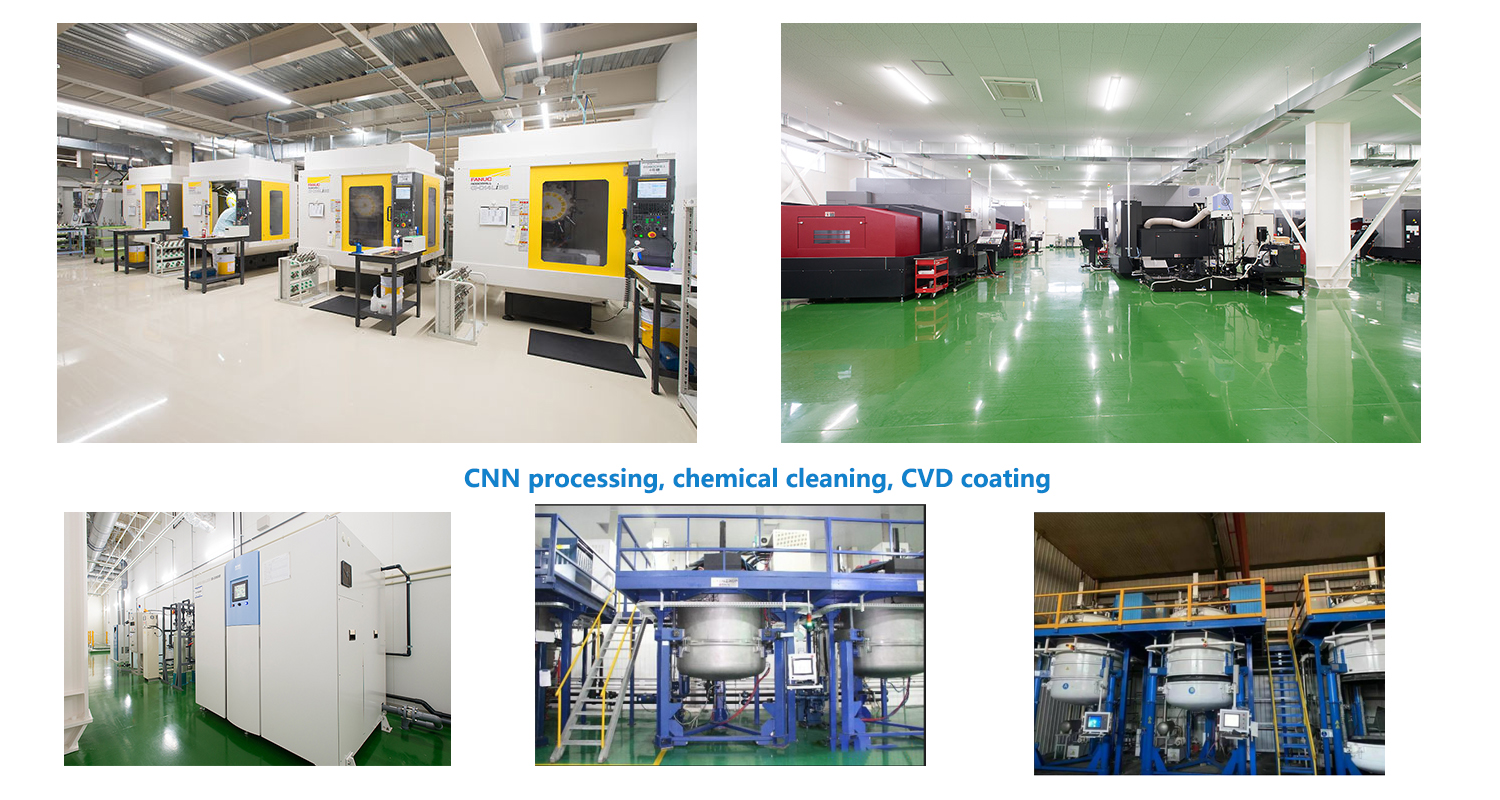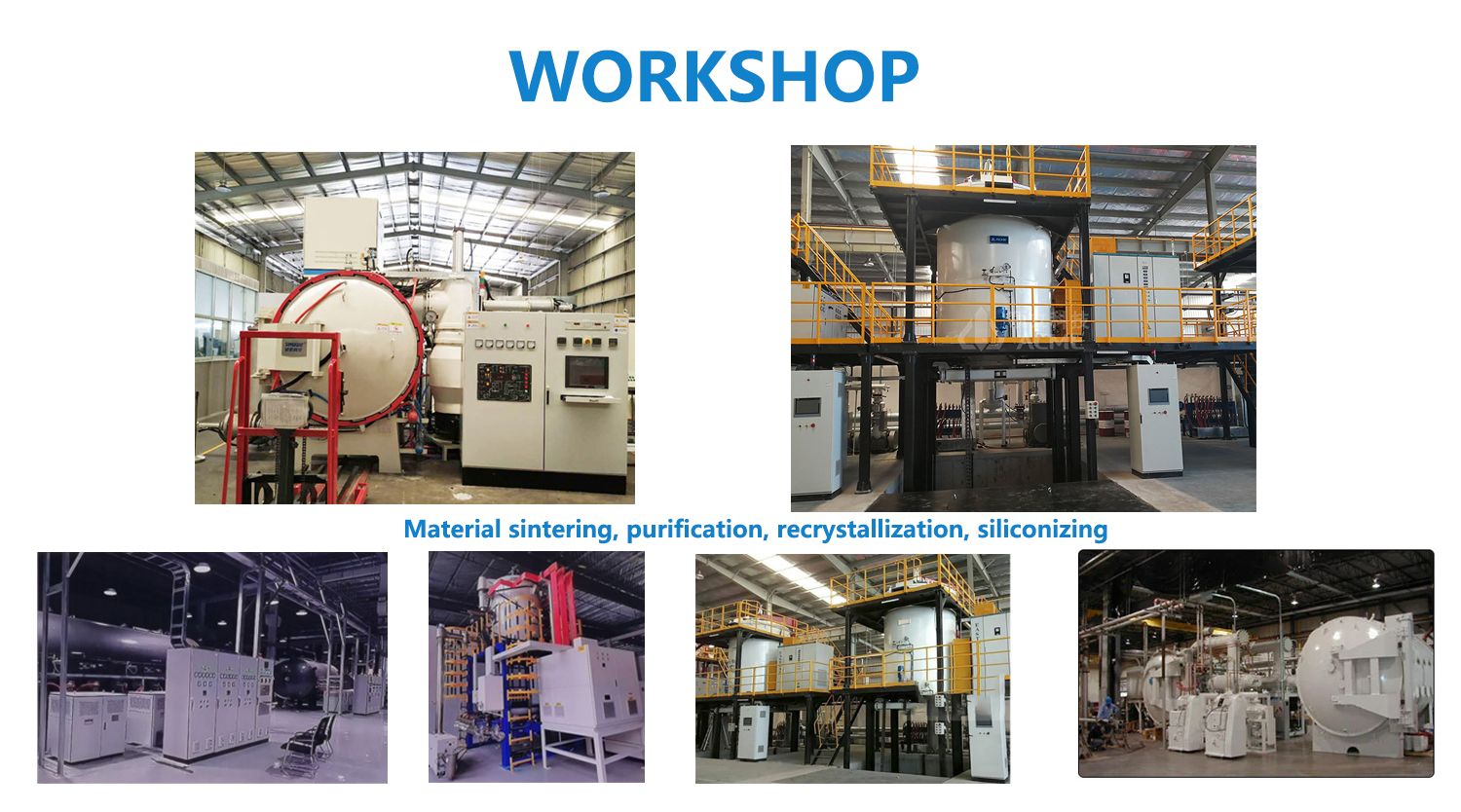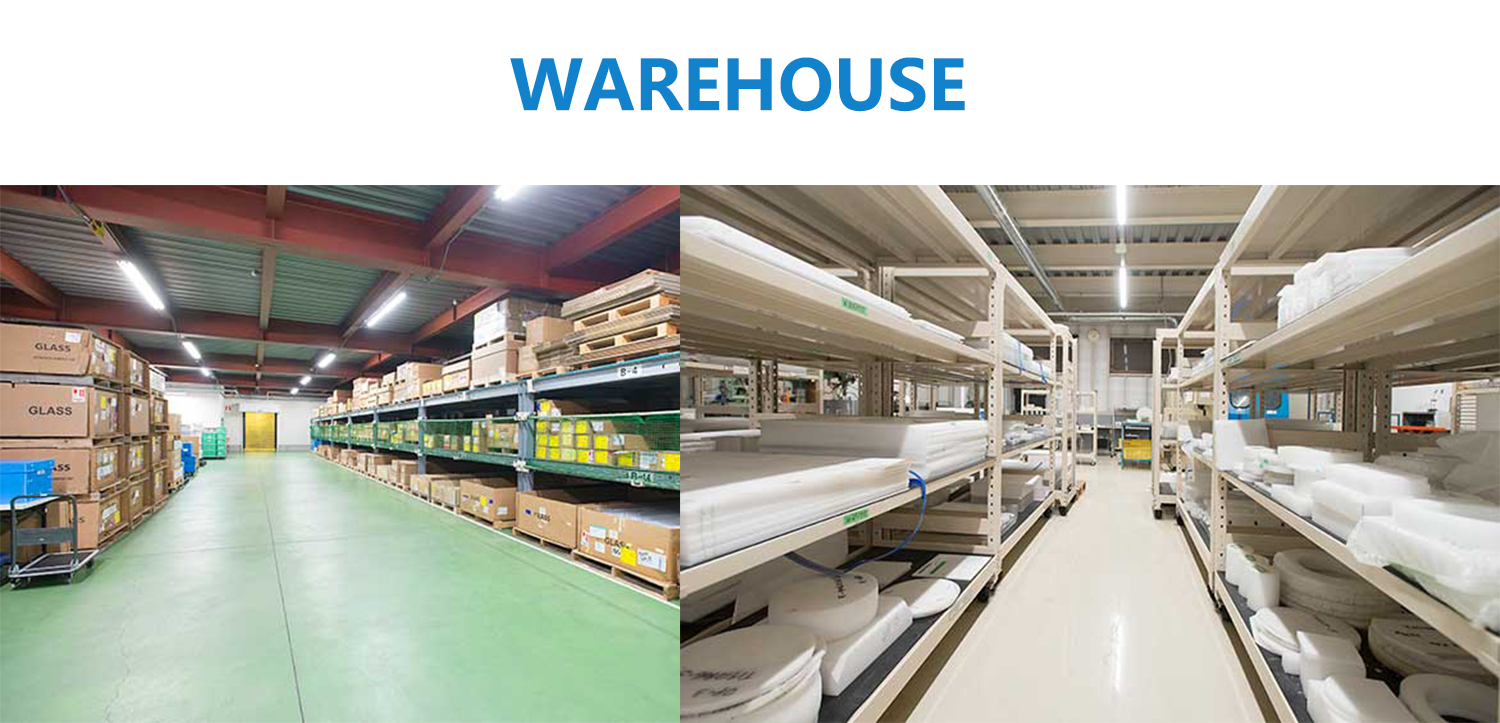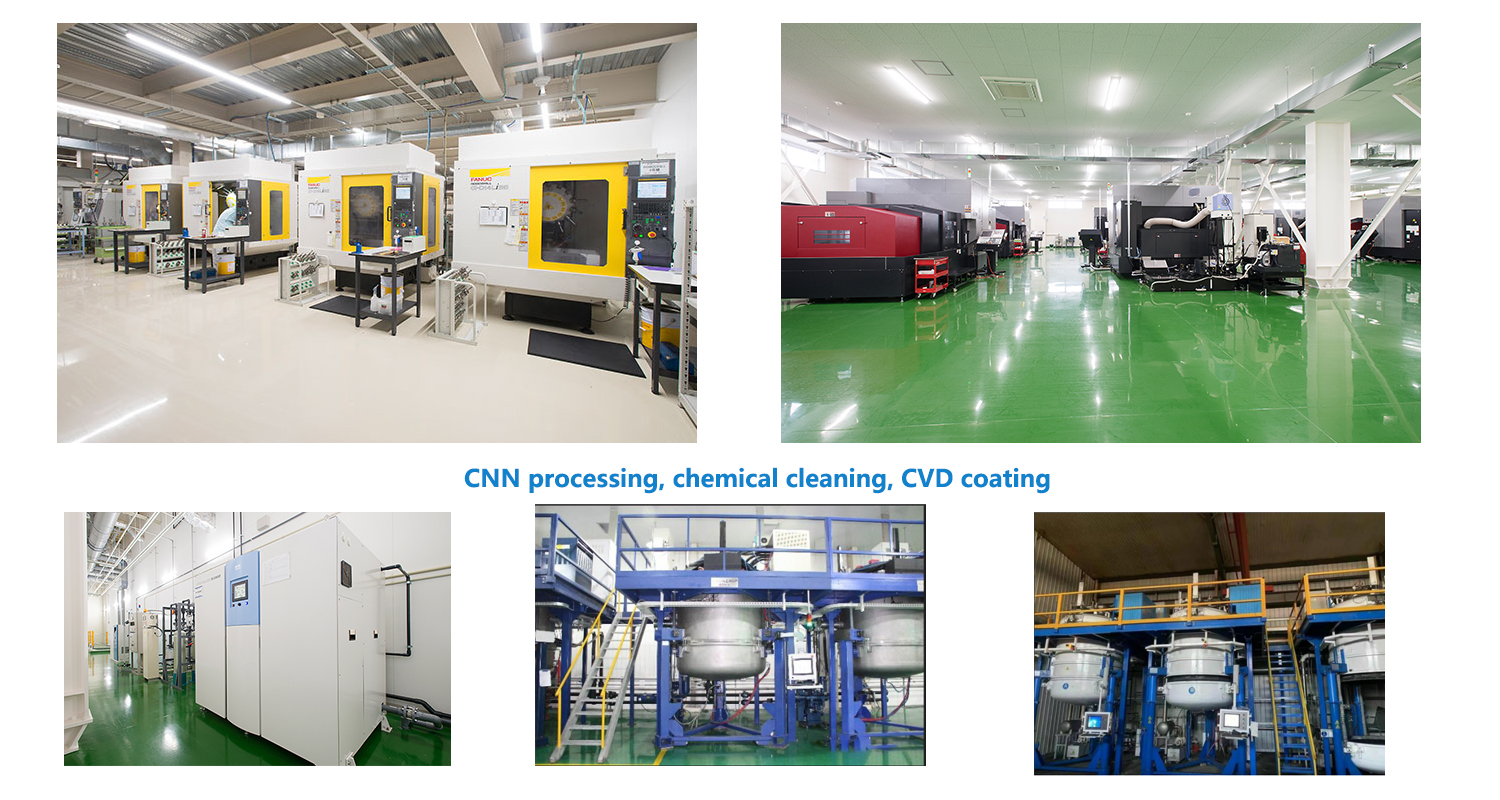
Semicera’s Silicon Carbide Dummy Wafer has transformed semiconductor manufacturing by addressing critical industry challenges. Its exceptional durability ensures long-term reliability, even under demanding conditions. High thermal stability allows it to perform seamlessly in extreme temperatures, making it ideal for advanced processes. The wafer’s superior purity minimizes contamination risks, safeguarding sensitive materials and enhancing production quality. By improving process accuracy and efficiency, this innovative solution supports manufacturers in achieving consistent results while reducing operational costs. Its role in advancing semiconductor technology underscores its importance in modern fabrication environments.
Key Takeaways
- Silicon Carbide Dummy Wafers enhance semiconductor manufacturing by providing exceptional durability, ensuring long-term reliability even in high-stress environments.
- Their superior thermal stability allows these wafers to perform efficiently under extreme temperatures, making them ideal for advanced manufacturing processes.
- The high purity of Silicon Carbide minimizes contamination risks, safeguarding sensitive materials and improving overall production quality.
- Using these dummy wafers can significantly reduce operational costs by lowering the frequency of replacements and minimizing production downtime.
- Silicon Carbide Dummy Wafers support process accuracy and efficiency, leading to higher yields and reduced waste in semiconductor fabrication.
- These wafers are reusable, offering a cost-effective solution that enhances sustainability in semiconductor manufacturing.
- Adopting Silicon Carbide technology positions manufacturers at the forefront of innovation, driving advancements in high-power and high-frequency applications.
What Are Silicon Carbide Dummy Wafers and Their Role in Semiconductor Manufacturing?

Definition of Silicon Carbide Dummy Wafers
Silicon Carbide Dummy Wafers are specialized tools designed to support semiconductor manufacturing processes. These wafers, made from silicon carbide (SiC), serve as non-functional replicas used during testing, calibration, and quality assurance stages. Unlike active wafers, they do not contain electronic circuits. Instead, they act as placeholders or test surfaces, ensuring that production equipment operates accurately without risking valuable functional wafers. Their composition, featuring high thermal conductivity and exceptional structural integrity, makes them indispensable in environments requiring precision and reliability.
The Role of Dummy Wafers in Semiconductor Production
Dummy wafers play a critical role in semiconductor fabrication by safeguarding production efficiency and quality. Manufacturers use these wafers to simulate real production conditions, allowing them to test and calibrate equipment before processing functional wafers. This practice minimizes errors and reduces the likelihood of defects in final products. Additionally, dummy wafers protect sensitive silicon wafers during high-temperature processes, acting as a barrier against potential damage. They also assist in measuring critical parameters such as film thickness and uniformity, ensuring that production standards remain consistent.
"In lithography, dummy wafers serve as benchmarks for pattern accuracy and defect detection, ensuring geometric precision in semiconductor devices." - Saint-Gobain Ceramics & Refractories
The versatility of dummy wafers extends to research and development (R&D) environments, where they enable extensive experimentation without compromising production materials. Their use ensures that manufacturers can maintain high standards while exploring innovative technologies.
Why Silicon Carbide Is a Preferred Material for Dummy Wafers
Silicon carbide has emerged as the material of choice for dummy wafers due to its superior properties. Its exceptional thermal conductivity allows it to withstand extreme temperatures, making it ideal for high-temperature applications in semiconductor manufacturing. Studies highlight that silicon carbide outperforms traditional materials like silicon and quartz in terms of durability and efficiency.
Key advantages of silicon carbide include:
- High thermal stability: Silicon carbide maintains its structural integrity under intense heat, ensuring reliable performance during demanding processes.
- Exceptional wear resistance: The material resists degradation, enabling long-term use and reducing replacement costs.
- Superior purity: Its chemical inertness minimizes contamination risks, preserving the quality of sensitive semiconductor materials.
"Silicon carbide wafers enable the fabrication of faster, more efficient devices for high-temperature environments." - Entegris Blog
These attributes make silicon carbide dummy wafers an essential component in modern semiconductor production. Their ability to handle high-power and high-frequency applications further underscores their importance in advancing next-generation technologies.
Key Benefits of Silicon Carbide Dummy Wafers
Exceptional Durability for Long-Term Use
Silicon Carbide Dummy Wafers exhibit remarkable durability, making them a reliable choice for semiconductor manufacturing. Their wear resistance ensures they maintain structural integrity even after prolonged use in demanding environments. Unlike traditional materials, silicon carbide resists degradation caused by high temperatures, pressure, and repeated handling. This durability reduces the frequency of replacements, lowering operational costs and minimizing production downtime.
The material's hardness further enhances its longevity. Silicon carbide withstands mechanical stress and abrasive conditions, ensuring consistent performance over time. Manufacturers benefit from this reliability, as it supports uninterrupted production cycles and maintains process accuracy. By choosing silicon carbide, industries can achieve long-term efficiency and cost-effectiveness.
Superior Thermal Stability for High-Temperature Processes
Silicon carbide's exceptional thermal stability makes it indispensable for high-temperature semiconductor processes. It retains its structural integrity under extreme heat, ensuring reliable performance in environments where traditional materials may fail. This property is particularly valuable in applications requiring high-power and high-frequency devices, where consistent thermal conductivity is critical.
The ability to handle elevated temperatures allows silicon carbide to support advanced manufacturing techniques. Processes such as epitaxy and ion implantation demand materials that can endure intense heat without compromising quality. Silicon Carbide Dummy Wafers excel in these scenarios, enabling precise and efficient production. Their thermal stability ensures that manufacturers can meet the rigorous demands of modern semiconductor fabrication.
Reduced Contamination Risks in Manufacturing
Silicon Carbide Dummy Wafers offer superior purity, significantly reducing contamination risks during semiconductor production. Their chemical inertness prevents unwanted reactions with sensitive materials, preserving the quality of functional wafers. This purity is essential for maintaining the integrity of advanced electronic components, where even minor impurities can lead to defects.
By minimizing contamination, silicon carbide enhances process accuracy and product reliability. Manufacturers can achieve consistent results, ensuring that final products meet stringent industry standards. The reduced risk of defects also translates to lower waste and improved cost efficiency. Silicon carbide's ability to safeguard production quality makes it a preferred choice for high-precision applications.
Cost-Effectiveness and Reliability Over Time
Silicon Carbide Dummy Wafers deliver unmatched cost-effectiveness and reliability, making them a preferred choice for semiconductor manufacturers. Their exceptional durability reduces the need for frequent replacements, which significantly lowers operational costs. Unlike traditional materials, silicon carbide maintains its structural integrity even after prolonged exposure to high temperatures, mechanical stress, and abrasive conditions. This longevity ensures consistent performance over extended periods, minimizing production interruptions and enhancing overall efficiency.
The superior thermal conductivity of silicon carbide further contributes to its cost-effectiveness. It enables efficient heat dissipation during high-temperature processes, reducing energy consumption and preventing equipment wear. Manufacturers benefit from lower maintenance expenses and improved process stability, which translates into long-term savings. Additionally, the material's high hardness and wear resistance ensure that the wafers withstand repeated handling and rigorous testing without degradation.
Silicon carbide's reliability extends to its ability to handle extreme conditions. It performs exceptionally well in high-pressure, high-voltage, and high-frequency environments, where traditional materials often fail. This resilience makes it ideal for advanced semiconductor applications, including power electronics and high-frequency devices. By choosing Silicon Carbide Dummy Wafers, manufacturers can achieve consistent results across diverse production scenarios, ensuring that their processes remain efficient and dependable.
"Silicon carbide's unique properties make it a cost-effective solution for high-performance semiconductor manufacturing." - Semiconductor Today
In comparison to silicon wafers, silicon carbide offers superior performance in adverse conditions. It can endure higher temperatures and voltages, making it suitable for demanding applications. The reduced risk of contamination and defects further enhances its value, as manufacturers can produce high-quality components with fewer resources. This combination of durability, efficiency, and reliability positions Silicon Carbide Dummy Wafers as a cornerstone of modern semiconductor fabrication.
Real-World Applications and Case Studies

Examples of Efficiency Gains in Semiconductor Manufacturing
Silicon carbide has become a cornerstone in semiconductor manufacturing due to its ability to enhance efficiency across various processes. Its high thermal conductivity ensures effective heat dissipation, which is critical for maintaining equipment performance during high-temperature operations. This property allows manufacturers to achieve faster production cycles without compromising quality. Additionally, the material's exceptional durability reduces the frequency of wafer replacements, minimizing downtime and operational costs.
In lithography, Silicon Carbide Dummy Wafers serve as precise benchmarks for pattern accuracy and defect detection. Their superior structural integrity ensures consistent results, even under demanding conditions. By using these wafers, manufacturers can optimize their processes, leading to higher yields and reduced waste. The ability to maintain process accuracy while safeguarding sensitive materials highlights the significant efficiency gains achieved through silicon carbide technology.
"The adoption of silicon carbide in semiconductor manufacturing has revolutionized high-temperature processes, enabling faster, more reliable production." - Semiconductor Industry Insights
Case Study: Semicera’s Silicon Carbide Dummy Wafer in High-Temperature Processing
Semicera’s Silicon Carbide Dummy Wafer has demonstrated remarkable performance in high-temperature processing environments. A leading semiconductor manufacturer integrated these wafers into their epitaxy and ion implantation processes. The results showcased the material's ability to withstand extreme heat while maintaining structural integrity. This resilience allowed the manufacturer to achieve consistent film thickness and uniformity, critical parameters for advanced electronic components.
The case study revealed that the use of Semicera’s wafers reduced contamination risks significantly. Their high purity preserved the quality of functional wafers, ensuring defect-free production. Furthermore, the wafers' wear resistance enabled prolonged usage, reducing the need for frequent replacements. This durability translated into substantial cost savings and improved operational efficiency.
"Semicera’s Silicon Carbide Dummy Wafer has set a new standard for high-temperature processing, delivering unmatched reliability and precision." - Industry Expert Review
Quantifiable Improvements in Productivity and Cost Savings
The integration of Silicon Carbide Dummy Wafers into semiconductor manufacturing has led to measurable improvements in productivity and cost efficiency. Manufacturers report a reduction in production downtime due to the wafers' exceptional durability. Their ability to endure repeated handling and rigorous testing ensures uninterrupted operations, supporting higher output levels.
Cost savings stem from multiple factors. The reduced need for replacements lowers material expenses, while the wafers' thermal stability minimizes energy consumption during high-temperature processes. Additionally, their chemical inertness prevents contamination, reducing waste and ensuring consistent product quality. These benefits collectively enhance the overall profitability of semiconductor fabrication.
A recent analysis highlighted that manufacturers using silicon carbide technology experienced a 20% increase in production efficiency and a 15% reduction in operational costs. These quantifiable improvements underscore the transformative impact of Silicon Carbide Dummy Wafers on the semiconductor industry.
"Silicon carbide's unique properties drive significant cost savings and productivity gains, making it an indispensable material for modern semiconductor manufacturing." - Semiconductor Today
Comparison with Traditional Materials
Limitations of Traditional Dummy Wafer Materials (Silicon, Quartz)
Traditional dummy wafer materials, such as silicon and quartz, exhibit several limitations that hinder their performance in modern semiconductor manufacturing. Silicon wafers, while widely used, lack the durability required for high-temperature and high-stress environments. Their structural integrity diminishes under prolonged exposure to extreme heat, leading to frequent replacements and increased operational costs. Quartz, on the other hand, offers better thermal stability than silicon but falls short in wear resistance. Its brittleness makes it prone to cracking or chipping during repeated handling or rigorous testing.
Both materials also struggle with contamination control. Silicon and quartz wafers often interact chemically with sensitive semiconductor materials, introducing impurities that compromise production quality. This issue becomes particularly problematic in advanced processes requiring ultra-high purity standards. Additionally, their limited thermal conductivity restricts their ability to dissipate heat efficiently, which can result in uneven processing and reduced accuracy in high-temperature applications.
"The fragility and contamination risks associated with traditional materials like silicon and quartz make them less suitable for demanding semiconductor processes." - Semiconductor Industry Insights
These shortcomings highlight the need for a more robust and reliable alternative in semiconductor manufacturing.
Advantages of Silicon Carbide Over Silicon and Quartz
Silicon carbide has emerged as a superior material for dummy wafers, offering distinct advantages over traditional options like silicon and quartz. Its exceptional thermal conductivity ensures efficient heat dissipation, enabling consistent performance in high-temperature environments. Unlike silicon, which degrades under extreme heat, silicon carbide maintains its structural integrity, making it ideal for advanced manufacturing techniques such as epitaxy and ion implantation.
Durability stands out as another key advantage. Silicon carbide exhibits remarkable wear resistance, allowing it to endure repeated handling and rigorous testing without degradation. This property significantly reduces the frequency of replacements, lowering operational costs and minimizing production downtime. Quartz, known for its brittleness, cannot match the mechanical strength of silicon carbide, which withstands abrasive conditions and mechanical stress with ease.
The chemical inertness of silicon carbide further enhances its appeal. It minimizes contamination risks by preventing unwanted reactions with sensitive materials, ensuring that production processes remain clean and precise. This purity is critical for maintaining the quality of advanced electronic components, where even minor impurities can lead to defects.
"Silicon carbide's unique combination of thermal stability, durability, and purity makes it an indispensable material for high-performance semiconductor manufacturing." - Semiconductor Today
These advantages position silicon carbide as the material of choice for manufacturers seeking efficiency, reliability, and precision in their processes.
Long-Term Performance and Reliability of Silicon Carbide Dummy Wafers
Silicon carbide dummy wafers deliver unmatched long-term performance and reliability, making them a cornerstone of modern semiconductor fabrication. Their ability to withstand extreme conditions ensures consistent results across diverse applications, from high-power electronics to high-frequency devices. Unlike traditional materials, silicon carbide retains its properties over extended periods, reducing the need for frequent replacements and ensuring uninterrupted production cycles.
The material's high thermal conductivity plays a crucial role in its reliability. It enables efficient heat dissipation, preventing thermal stress and ensuring uniform processing. This capability supports advanced manufacturing techniques that demand precise temperature control, such as lithography and ion implantation. Manufacturers benefit from improved process accuracy and reduced defect rates, which translate into higher yields and lower waste.
Durability further enhances the long-term value of silicon carbide dummy wafers. Their wear resistance allows them to endure extensive usage without degradation, even in demanding environments. This resilience reduces maintenance requirements and operational costs, providing a cost-effective solution for semiconductor manufacturers.
"Premium silicon carbide dummy wafers can be cleaned and reused indefinitely, offering unparalleled longevity and reliability." - Industry Expert Review
By choosing silicon carbide dummy wafers, manufacturers gain a dependable tool that supports efficiency, precision, and cost savings over time. Their superior performance underscores their importance in advancing semiconductor technology.
Semicera’s Silicon Carbide Dummy Wafer delivers unmatched advantages in semiconductor manufacturing. Its exceptional durability ensures long-term reliability, even in high-stress environments. The superior thermal stability allows it to perform efficiently under extreme temperatures, while its high purity minimizes contamination risks, safeguarding production quality. These features collectively enhance process accuracy and operational efficiency. By adopting this innovative solution, manufacturers can achieve significant cost savings, improved performance, and consistent results. Silicon carbide technology continues to revolutionize the industry, setting new standards for precision and reliability in modern fabrication processes.
FAQ
What are Silicon Carbide Dummy Wafers used for?
Silicon Carbide Dummy Wafers serve as essential tools in semiconductor manufacturing. They are primarily used during testing, calibration, and quality assurance processes. These wafers act as placeholders or test surfaces, ensuring that production equipment operates accurately without risking functional wafers. Their applications include high-temperature processing, lithography, and research and development.
Why is silicon carbide preferred over traditional materials like silicon or quartz?
Silicon carbide offers superior properties compared to traditional materials. Its high thermal conductivity ensures efficient heat dissipation, making it ideal for high-temperature and high-power applications. Unlike silicon, which degrades under extreme heat, silicon carbide maintains structural integrity. Additionally, its exceptional durability and chemical inertness reduce contamination risks, ensuring consistent performance and product quality.
How do Silicon Carbide Dummy Wafers improve manufacturing efficiency?
These wafers enhance efficiency by reducing contamination risks, minimizing defects, and ensuring process accuracy. Their durability lowers the frequency of replacements, which reduces downtime and operational costs. The ability to withstand extreme conditions allows manufacturers to maintain consistent production cycles, leading to higher yields and improved profitability.
Can Silicon Carbide Dummy Wafers be reused?
Yes, silicon carbide dummy wafers can be cleaned and reused multiple times due to their exceptional wear resistance and durability. Their ability to endure repeated handling and rigorous testing without degradation makes them a cost-effective solution for semiconductor manufacturers.
Are Silicon Carbide Dummy Wafers suitable for high-temperature processes?
Silicon carbide excels in high-temperature environments. Its superior thermal stability ensures reliable performance during processes like epitaxy and ion implantation. The material retains its structural integrity under extreme heat, making it indispensable for advanced semiconductor manufacturing techniques.
How do these wafers reduce contamination risks?
Silicon carbide's high purity and chemical inertness prevent unwanted reactions with sensitive materials. This minimizes contamination risks during production, preserving the quality of functional wafers. By reducing impurities, manufacturers achieve consistent results and meet stringent industry standards.
What industries benefit from using Silicon Carbide Dummy Wafers?
The semiconductor industry benefits the most from these wafers. They are widely used in manufacturing high-power, high-frequency, and high-temperature devices. Additionally, they support research and development efforts, enabling the advancement of next-generation technologies.
How do Silicon Carbide Dummy Wafers contribute to cost savings?
Their durability and wear resistance reduce the need for frequent replacements, lowering material expenses. The wafers' thermal stability minimizes energy consumption during high-temperature processes. Furthermore, their ability to reduce defects and contamination leads to less waste, enhancing overall cost efficiency.
What makes silicon carbide suitable for power applications?
Silicon carbide's high thermal conductivity and low ON-resistance make it ideal for power applications. These properties allow it to handle high-voltage and high-frequency environments effectively. Its durability ensures reliable performance in demanding conditions, making it a preferred choice for power electronics.
How do these wafers support research and development?
Silicon Carbide Dummy Wafers provide a stable platform for testing new materials and processes. Their durability and precision enable extensive experimentation without compromising production materials. This makes them invaluable for advancing semiconductor technologies and developing innovative solutions.



